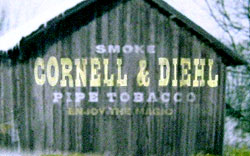 If you’ve been smoking a pipe for at least a year, chances are that you’ve smoked at least one blend of pipe tobacco made by Cornell & Diehl. If you’re like me, then you’ve smoked a little over 10 blends, have several un-opened tins you still need to try, and have some real favorites in the C&D line-up. However, if this is the case, you haven’t even covered five percent of their selection.
If you’ve been smoking a pipe for at least a year, chances are that you’ve smoked at least one blend of pipe tobacco made by Cornell & Diehl. If you’re like me, then you’ve smoked a little over 10 blends, have several un-opened tins you still need to try, and have some real favorites in the C&D line-up. However, if this is the case, you haven’t even covered five percent of their selection.
The company produces a roster of about 250 pipe tobacco blends. They are processed, blended, and packaged in their 5,500 square foot facility in the beautiful rolling hills of Morganton, North Carolina. In addition to producing blends under the Cornell & Diehl brand, they also produce the quite popular boutique brand, G. L. Pease, plus Captain Earle’s for Hermit Tobacco, and Low Country Tobacco for SmokingPipes.com.
PipesMagazine.com Publisher, Kevin Godbee spent half a day touring and filming the plant, and talking to Craig, Chris and Patty Tarlar and enjoyed pizza with the employees.
It’s a beautiful ride through Morganton, N.C. It’s everything you would imagine being in the South, and in the countryside should be; green grass, rolling hills, farms with horses, big shade trees, and winding roads. Driving through Morganton I even figured out how Craig came up with the unique names for a couple of C&D’s blends. You better pay attention if you are trying to find Cornell & Diehl though, even if you have a good GPS. I blew right past the long driveway and had to turn around. There is just a little sign, but there is also an "Elegant Emu" and a "Purple Cow" (which is actually black) that you can look for.
Please enjoy our 13-minute video tour of the Cornell & Diehl factory, followed by an interview with Craig Tarlar, the owner and driving force behind Cornell & Diehl.
 |
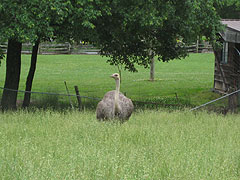 |
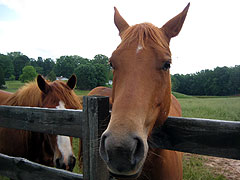 |
I was at Cornell & Diehl from about 10 am until 3 pm and I am happy to report that during the entire time while we talked, took photos and shot video, we were smoking pipes! It’s just a pleasure to walk into Cornell & Diehl’s offices where Craig and Chris Tarlar both have pipes going the entire time. It just makes you feel good to know that a business catering to pipe smokers is being run by real pipe smokers.
Craig Tarlar Interview
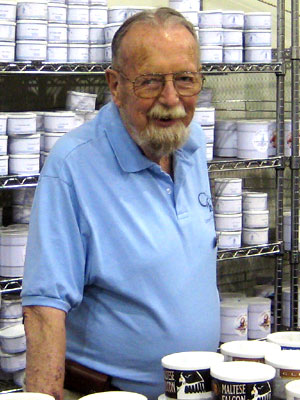 Kevin: So how did you go from being a New York City marketing executive that ended up in the North Carolina countryside, producing pipe tobacco?
Kevin: So how did you go from being a New York City marketing executive that ended up in the North Carolina countryside, producing pipe tobacco?
Craig: I was between assignments; between engagements as they say in the theater, at 60, and I was looking for something to do. I had been a lifetime pipe smoker and I had been buying tobacco from a little company that started out as Atlas in the 1880s in New York and then had been resold a couple of times. But over the years, I’d been buying from the same company, mail order, and I found out they were for sale so I managed to buy them for a small amount and that’s how I started. I was looking for something to do.
Kevin: So Cornell and Diehl was originally another company?
Craig: Yes. It was Atlas, and then it was Amar Blends when I bought it. It had been renamed. I didn’t like the name and it didn’t have the most sterling reputation. Cornell is my middle name, and Diehl is Patty’s maiden name, so I decided to use an old fashioned type and make it look like it had been around for years.
We were living in Bucks County, Pennsylvania at the time and I started the new incarnation of the company in the cellar of our town house. I have a daughter and two granddaughters who live here in Morganton and we wanted to watch them grow up. The business was certainly portable, so it came down on a moving van with us.
Kevin: How is Cornell and Diehl different from other pipe tobacco companies?
Craig: We’re hand blenders. All of our tobaccos are blended by hand. We intend to stay relatively small and concentrate on product; on getting the best possible tobacco and making blends that everybody likes. It’s very similar to restaurants in that you can have a big restaurant chain and serve a lot of people and branch out, or you can have a small intimate restaurant with a limited menu, (although ours is not particularly limited), but that concentrates on quality and service and that’s what we do.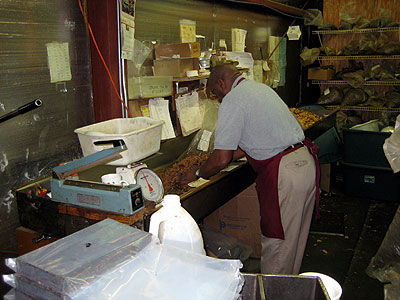
Kevin: And speaking of the menu, you have over 200 blends of Cornell and Diehl, and you make G.L. Pease and the Hermit Tobacco lines and others. How do you come up with all these different blends and how do you keep coming up with ideas for new blends?
Craig: How do restaurants do it, how do chefs do it? Its imagination, it’s knowing what each element of a blend tastes like and how it will blend with other tobaccos.
Also, the pipe smoking public always wants something new. There aren’t too many pipe smokers; that have an all day blend or a single blend that is all they smoke these days. You wouldn’t go to a good restaurant and have the same meal every time even if it was your favorite. You’d want to try something new.
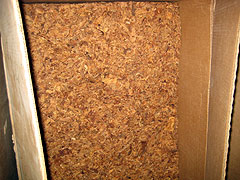 |
 |
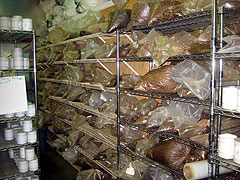 |
Kevin: What is your perception of where the general pipe smoking market is headed? Do you see it declining, holding steady, or growing?
Craig: We see growth and not just in this company. When we go to pipe shows we’re seeing a lot of young smokers, new smokers. We talk to store owners near college campuses and they will say that a young man will come in from college and he’ll buy an inexpensive pipe and tobacco, and then a week later he’s back with a friend. Pretty soon the whole fraternity house is there and they’re increasing the value of the pipes they buy and they’re looking for better pipes and better tobacco.
Kevin: Well, that’s good news.
Craig: We’re also seeing young store owners getting into the business.
Kevin: Since you have so many different blends to choose from, could we pick out just a few to recommend for the new pipe smoker, and something maybe for the aromatic smoker, and something for the English smoker?
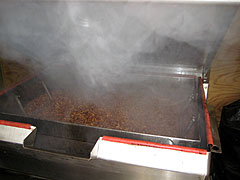 |
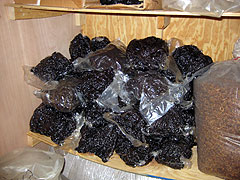 |
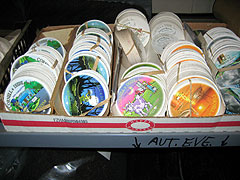 |
Craig: For people who recently, within the last year or two, have taken up the hobby, I would recommend a mild English. Yale Mixture is a good one. For someone that likes aromatics, or you like the room note or your family likes the room note, then I would recommend Apricots & Cream, Nutty Irishman, and Mocha. They are all popular, and not too strong with a good flavor.
Kevin: How about something for the more experienced person that has been smoking a pipe for a long time, but has not had the opportunity to be introduced to your blends?
Craig: That’s hard to do an across the board answer. We prefer to have them call us and discuss their druthers. Tell us what they like now and then we can suggest the trial pack so that they get a range in that and there’s something else we will do, is that if they find a blend that they like but want a small change in it, with a little less Latakia or a little more Perique or something, we’ll do that. We have hundreds of cards, beyond the 250 for customers that we make a special blends for. I don’t know if other companies do that, but we enjoy doing it.
Kevin: I have two of my personal favorites that I’d like to know more about. One is Billy Budd and the other is Tuskegee Airman. Can you give me a brief rundown on those blends?
Craig: Billy Budd originated as a special personal blend we made by request for our late friend Sailorman Jack. He wanted a full blend with Latakia and cigar leaf in it. Billy Budd is a heavy Latakia blend with rough cut Burley, bright Virginia flake and a good amount of rough cut cigar leaf. We made it for him and he liked it and his friends liked it, so we decided to bring it out. Tuskegee Airman is a mixture of two of our blends that I actually mixed together by mistake.
Kevin: Well, I’m glad you made that mistake because it is one of my favorites.
 |
 |
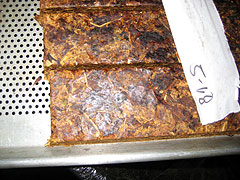 |
Craig:There’s another one. Plantation Evening. It was a weekend and I was blending. My granddaughter was in helping me and I was talking and put the wrong tobacco in and was quite furious with myself. But I let it sit for about a week and then tried it and it turned out to be a very popular blend in the long run.
Kevin: You have some great names for your blends, and some wonderful packaging. How do you come up with the ideas for the names and the packaging?
Craig: Well, sometimes I see a sign. The Cross-Eyed Cricket was such, as well as Exhausted Rooster. Sometimes we have a series running. Right now Tuskegee Airman is part of a series of four honoring black military members. There’s Buffalo Soldier and there will be in the fall, Montford Point Marine, and the USS Mason, which was the first Navy ship to be crewed by all African-American soldiers.
Sometimes the names come from suggestions by knowledgeable people in the industry. Bob Runowski from Philadelphia is one who is an encyclopedia of old blends and a Burley fan. Largely because of the suggestions he’s made, we’ve gotten very deeply into Burley’s and it’s carrying back a tradition that’s been in the United States for years and kind of got lost, and now it’s back. Bob also suggested Haunted Bookshop and Morley’s Best.
Pennington Gap was suggested by William Serad. He used to write Trial by Fire, and he suggested that name because his mother lived in Pennington Gap in Virginia and he was brought up near it.
Kevin: Some of the tins have a more plain blue and white packaging, versus the more colorful ones. Is there a difference in those blends?
Craig: The blue and white labeled tins are also sold in bulk and the tins with colorful artwork are only sold in tins.
Kevin: How do you manage your tobacco leaf supplies? For example, there must be specific types of leaf required for different blends, so what happens if you can’t get a certain leaf? Do you stop production or do you make a substitute? Do you run into situations where there’s competition for certain varietals?
Craig: Yes. Let me answer one at a time.
The leaf will change. I mean, the 2001 crop is the 2001 crop. When that’s gone, it’s gone. So we’re very careful about the next; let’s take Bright Virginia as an example. When we buy Bright Virginia, we decide on a particular crop year because of its taste and its color and any number of factors. We reserve as much as we can of it; maybe 25, 30 cases of it. When that’s gone, then we have to find something that matches it and we try and match by sugar content, nicotine content, color, and most of all, taste, and I really don’t like to do it, but we have to to continue the blends. It’s what I term a burnt tongue day when I have to go down to smoke the raw tobacco.
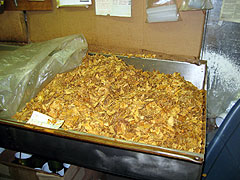 |
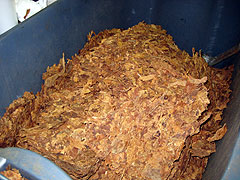 |
 |
We use a major supplier for our tobacco who can match, or come very close to what we’re running out of. They keep 25 million pounds on hand at all times.
Color … sometimes we’re in competition with color, particularly with the Chinese. If it’s bright, they’ll buy it. The brighter the better and so sometimes it’s very hard to get a very Bright Virginia, because they’ve been into the warehouses and bought all of the very bright stuff. It’s not because bright stuff is better, it’s just that it looks better to the Chinese. Some very bright stuff is very hot and in fact, we use some of it as scrap.
Kevin: So that is a situation where you run into some competition for certain varietals of tobacco.
Craig: Yes, but not real competition. There’s enough tobacco out there that we can pretty much match it and now tobacco comes from all over the world.
Kevin: Where does your tobacco come from geography-wise?
Craig: From all over the world. Of course, Latakia comes from Cypress and Perique comes from St. James Parish. The United States is primary, but we get leaf from Canada, Brazil, and from East Africa, wherever we can match or come close to matching what we had before.
Speaking of matching, we refuse to match a blend that’s on the market. It’s almost impossible to do, even to match an old blend. We have no idea what tobacco is in it, what it tasted like raw, what they’ve put on it as a topping, which doesn’t have to be a flavor. A topping doesn’t have to be a flavor.
Kevin: I think it’s commonly believed that English blends have no topping, but I’ve been told that that’s no exactly true.
Craig: Not anymore. They had a law for many years that there could be no topping, but that’s since then been repealed.
Kevin: So just as you were saying, there could be some topping, but it doesn’t really add flavor?
Craig: Well, for instance, all of our tobacco has a topping on it which is a mold inhibitor. It’s tasteless, odorless, colorless, and food-grade. The ordinary person probably ingests a lot of it in their lifetime because it’s used in food also. Right across the board, everything has that on it. Our English blends do not have anything but that on it. So it’s an all natural tobacco taste.
Kevin: Cornell & Diehl has had a great 20 years, and I look forward to the next 20.
Craig: Our reward really is the enjoyment people get out of our product.
Cornell & Diehl TobaccoWikipedia Entry





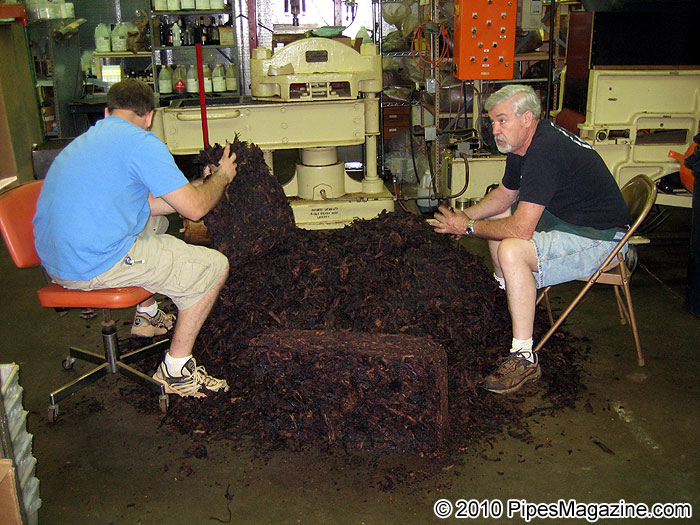













Great article. I loved the video to go along with it!
Amazing video, is nice to see how my favorite pipe tobacco is made and processed…
Another great write-up Kevin. Thanks.
Kevin:
Wonderful job on the interview and video. Loved them both. I have been to C&D in Morganton and it was just a delightful visit. Craig, Chris and Patty, plus the entire C&D gang are the best.
A very enjoyable article, Kevin! Craig seems like a really nice guy, and I think he has great approach to the fine art of blending. I’ve yet to discover C&D tobaccos (well, except for a few samples from a friend), as it’s simply not available here in Denmark. But you know that from experience 😉 A shame, really. Nothing would please me more than to see C&D and GL Pease represented in Paul Olsen’s downtown!
Thanks Kevin. The only thing that is relaxing about Pipe tobacco
is in the smoking of it. The rest is hard work. These people really
know what they are doing.
What a great video, would like to see similar on other companies, both here and abroad. Very educational. Thanks.
Great article, interview, and video!
It looks like you had a great time and I am jealous that I couldn’t be there to experience it myself.
Amazing article. They seem to know what they want and how to get it. I am just now starting to get into their blends. There is virtually something for everyone.
Thanks for another fine addition to your growing portfolio of informative and topical articles. The video tour and photos are especially appreciated. There was a goodly amount to absorb here, not only about C&D’s history and operation, but also some insights into the state of the pipe tobacco industry. To be sure, this article will be a valuable resource for a very long time.
Good article. I’ve met Chris a few times. He’s a great guy and very generous with the samples! I was just out in Western NC 2 weeks ago on a family vacation. I was very tempted to take the family on a side trip to Morganton, but I didn’t think the 2 little girls and the Mrs would have had much patience for a tour. Oh well, next time…
-Andrew
I’m glad you guys enjoyed the video and interview. Dr. Kenn, there will be more to come from Denmark. We will have video tours of the Mac Baren and Orlik factories in the future.
Really nice article and, of course video! Looking forward to see the MacBaren and Orlik in the near future! Keep up the good work!
Fantastic video and article. Am lokking foward to seeing them again in Ricmond this weekend if they don’t call Holiday Inn Tobacco Security on me for harrassment.
This was a real treat. Almost like being there. Thank you for the wonderful video and interview!
Glad you enjoyed it Captain Bob. You should come around here more often.
WOW! A fantastic piece of work indeed Mr. Godbee. I truly wish that I could have tagged along with you when filming that adventure. What beautiful countryside that must have been. Nice job. thezman.
Thanks Stephen. It was a really enjoyable trip. – Kevin
I’m glad I found this place. Wonderful content and new friends. Thanks!
Great article and video!
Many thanks to all.
There are many C&D blends in my collection and many more to be added.
Congratulations to C&D for a job well done.
The folks at C&D remind us all some of the reasons we so enjoy our pipes. The practiced skill and genuine care that go into the pipe smoking experience hearkens back to a simpler time…a time when peaceful pleasures trumped expediency. Thanks for the reminder.
Great tobacco,and great people!
On Tuesday (11/2/10) I spent a couple of visiting with Patty and Craig at their C&D factory, Craig gave me tour of the facility and everything was in full operation. It was a great experience and I had a wonderful time, it’s been a long time since I met two wonderful people as I did on Tuesday morning.
I’ll be smoking alot more of C&D blends and alot less of others!!
I grew up in your neck of the woods and visit quiet often. what are the chances I could visit? do you have a stand at the I-40 flea market, or was that changed to the Jamestown flea market? any way I live in NJ now and grow some tobacco of my own, still working on the best way to cure and process it. I took in about 5 lbs. this year, not much, gut considering I had to grow it in 5 gal. buckets I think I did OK for a first try. Anyway glad to here of good things happening in the old home town.
I lived in Morganton for two years. It really is a lovely area. I had been wanting to visit the area again and now I have one more reason to do so!
Great Video!! Just tried one of their blends and I really like it!!!!
I am very appreciative of my friendship with Craig, Paddy and Chris Tarler. They made my dream come true by helping me create the blend I always wanted but could never find. It is known as Captain Bob’s Blend. Now it is one of their artwork tinned blends available to everyone from C&D. On their site, it is located under Aromatic Blends containing Latakia (first entry under that category). The folks at C&D are exceptional people and as far as I am concerned, the pipe smoker’s best friends!
I enjoyed reading this article. Now i’ll have to give their tobacco a try!